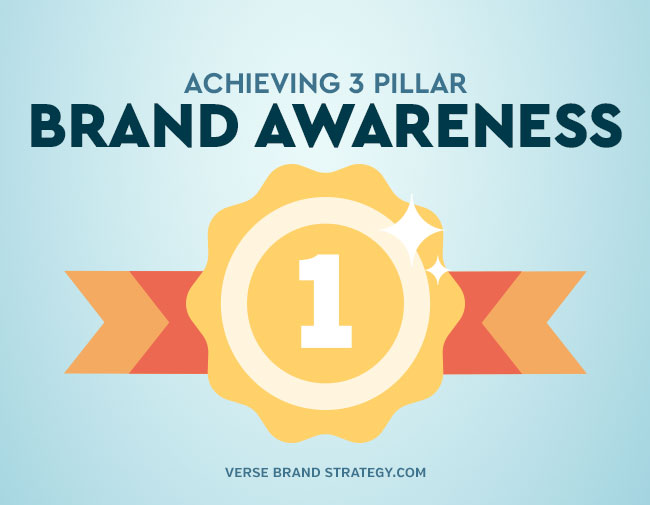I’ve witnessed the term Branding used in multiple different facets of sales, marketing, and design. As a result, and understandably so, there has been confusion around the term Brand unless you’ve been in the industry.
Even when explained by those who know, you may have gotten a slightly skewed answer based on the nuances of someone’s own knowledge. Luckily, now the definition is far more often consistent among a wider range of audiences.
So the new question I’ve heard lately is: How do I create more awareness around my brand?
For starters, let’s cover how it all fits together. The discipline of branding exists in three distinct pillars:
Pillar One: Foundation
The foundation of your brand consists of elements that create the core of your brand identity and brand culture. Some of those elements include your purpose, vision, personality, and positioning.
Pillar Two: Communication
Your brand communication is a wide variety of how you visually and verbally communicate to the world, but mainly your audience(s). This includes so many facets of your branding: visual brand standards, brand voice and tone, product experience, customer experience, customer service, employee onboarding, and so much more.
Pillar Three: Distribution
Distribution is how you’re sharing your brand through channels of communication. However, this is very dependent on a few factors: Who are you talking to? What are you saying? When & where are you communicating?
Secondly, let’s take a bird’s eye view of your branding.
Someone within your business should have the responsibility of overseeing the integrity of your brand. This could exist as one role, or multiple people with different responsibilities within your organization. This person, or those people, should assess brand continuity and cohesiveness by continually revisiting touchpoints where the brand reaches it’s stakeholders, shareholders, and customers.
By continually asking “Does this all equally represent our brand?,” you’ll get a clearer view of where the weak points may be and where you’re strengths exist.
Here are some other important considerations will help with brand continuity:
- Do you know where your audience exists? Do you know them well enough? Are you meeting them when and where they are?
- Are you consistently aligned with your communication(s), so you’re brand is top of mind and highly regarded?
- Has your brand adopted standards for all forms of communication, both visually and verbally? In other words, do all forms of communication look as though it’s coming from the same company?
If your answer isn’t a resounding “yes,” then take a look at what is working and what’s not. Then make sure to realign your goals and think of opportunities to provide value where your competition isn’t.
Thirdly, let’s define what brand awareness means for you.
Success around brand awareness means something different for every organization. This depends on leadership, industry, audience, etc. So, the questions you need to ask yourself is: What does “success” around brand awareness mean for my organization? Is it the amount of social media followers you’ve gained over the last 6 months? Is it meeting quarterly or yearly sales goals?
If you can clarify what success and what consistency is, then you’ll be able to measure success around your brand awareness goals.
Now it’s your turn: What are your struggles with brand awareness? What are some actions that you’re taking toward achieving brand awareness?
—————
I would love to hear from you! Please feel free to leave your thoughts, comments, and feedback in the comments below.
~ Christine
